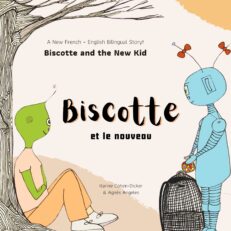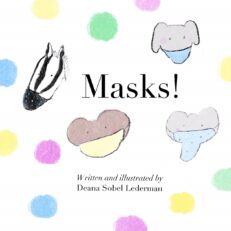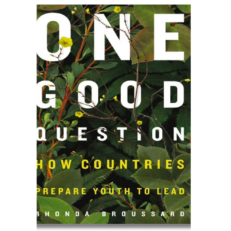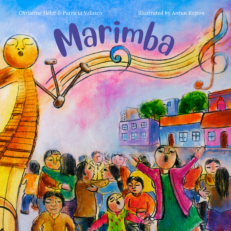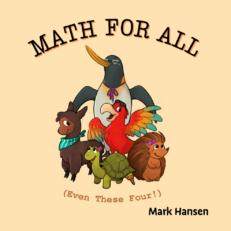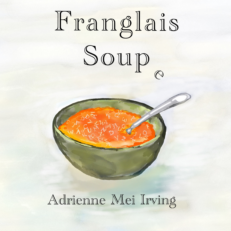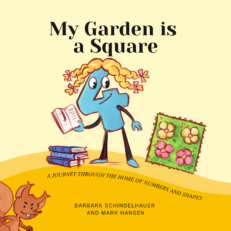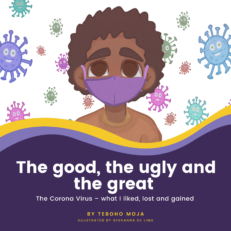Greenpoint, in north Brooklyn, is home to the first Polish-English dual-language program in New York City. The program began at P.S. 34 in September 2015 with one Kindergarten class, and is set to expand each year with an additional incoming class. For nearly a century and a half, P.S. 34 has been a neighborhood institution in Greenpoint, an area known for its large Polish-American community, as indicated by its nickname, “Little Poland.” The neighborhood boasts the second-largest concentration of Polish speakers in the United States after Chicago, in part due to the large numbers of Poles who arrived in New York before the turn of the twentieth century. Manhattan Avenue is at the heart of Little Poland, where one can find many Polish meat stores with strings of kielbasa, bakeries with Polish bread and babkas, and supermarkets with Polish pickles, jams, dried soups, and sauerkraut. With the addition of the Polish dual-language program, P.S. 34 has become a living link to Greenpoint’s rich history and a symbol of the Bilingual Revolution in Brooklyn.
Launching a dual-language program in a culturally and historically Polish neighborhood in Brooklyn was an important milestone for both the Polish community and the city as a whole. When the program was formally inaugurated in 2015, parents, city and local officials, and diplomats were in attendance, as well as local Polish daily news stations that were on hand to cover the event. District 14 Superintendent Alicja Winnicki, herself a Polish immigrant and a former principal of P.S. 34, congratulated Principal Carmen Asselta, teachers, and parents on the creation of the program in the heart of Greenpoint. Urszula Gacek, the Consul General of Poland in New York, praised the bilingual offerings of the school. Given her own personal background—Gacek is an English-born, Oxford-educated daughter of Polish immigrants who went on to become a Polish senator and a member of the European Parliament—Consul General Gacek explained, “I can’t imagine not supporting the Polish dual-language program.” The opening of the program was a moment of great pride for all involved—the culmination of the efforts of many dedicated parents, educators, and community actors.
The Strength of Collaboration
Carmen and Alicja credited the school’s parents with the program’s launch. The founding group started their initiative with a community survey to gauge interest in a Polish dual-language program back in 2014. Once they realized they had the numbers to build a strong case, they contacted Carmen and asked her to consider a dual-language program in Polish. Julia Kotowski recalls:
The idea started with Polish mothers sitting in the park. Someone said that there’s a law that allows for a dual-language program to be present in a school. A few of us got together, did some research, and wrote letters to Principal Asselta about our desire to start a program. That’s when we met with Alicja Winnicki, the district superintendent, who presented our idea to the Department of Education.
As stories told in many of the other chapters of this book demonstrate, many dual-language programs begin with grassroots campaigns led by parents. However, unique to the case of the Polish Dual-Language initiative in Greenpoint is the extraordinary support parents received from the district superintendent, along with P.S. 34’s school administration and teaching staff. To ensure the success in their endeavor, school leaders promptly met with representatives from the Office of English Language Learners and presented the hard data parents had collected on the number of students in Greenpoint who qualified for bilingual services, as well as the number of interested families. The project was soon off to a running start, and, with the backing of the community and school system, quickly became a reality.
A Clearly-Defined Program
The dual-language program at P.S. 34 set out to provide English Language Learners and English-proficient students with an academically rigorous curriculum in both Polish and English. Elizabeth Czastkiewicz, a Polish language Kindergarten teacher in the dual-language program, explains the benefit of teaching Polish in a formal classroom setting to her student population:
The children are all born here and the majority speak Polish at home. Those that have siblings tend to speak in English when they go home, but now parents are telling me that they go home and speak Polish. That was good to hear, that English is no longer their predominant language. They’re much more confident now so that they can go home, they can demonstrate. At this age, Kindergarten and 1st grade, children want to demonstrate to their families and their parents, “Look at what I learned! This is what I’m learning!” Parents want that. Building that confidence so that they’re not afraid to make a mistake is huge.
This structure enables the students to build upon their academic skills in their first language and, eventually, transfer those skills to the second language. Students are expected to comprehend, speak, read, and write in both Polish and English upon the completion of the dual-language program in 5th grade. Through careful planning between teachers in both languages, students develop as bilingual, biliterate, and bicultural individuals.
Experiential and hands-on learning techniques are also integrated into the classroom through reading books aloud, songs, and arts and crafts, as well as through field trips and multicultural presentations outside the classroom. Carmen describes an example of such enrichment activities:
The district took part in the Madlenka project, but every school developed their own projects according to the personality of their school or the mission of their teaching. The book celebrates multiculturalism; the book celebrates the richness of Madlenka’s neighborhood. This little girl walks around the block to visit her neighbors, with each neighbor representing a different part of the world. My Kindergarten classes decided that they were going to build Madlenka’s neighborhood in Greenpoint. This was the take of their grade: it’s our neighborhood—celebrating the richness of the multicultural flavor of Greenpoint.
For this project, children in the Polish dual-language class depicted bakeries, shops, homes adorned with Polish flags, and even pictures of revered Polish national figures. By celebrating the multicultural neighborhood they call home, the children developed a sense of pride in their own Polish culture.
That being said, even children who did not come from Polish heritage themselves were excited and thoroughly engaged in these kinds of cultural activities. These children also have much to gain from the Polish dual-language curriculum. Indeed, the program has witnessed a surge of families of non-Polish descent interested in the educational offerings for their children. Carmen describes the evolution of the program and its appeal to various parent groups:
This Kindergarten class is very interesting because there are five families that are not of Polish descent at all, but who have opted into the Polish program. These families chose Polish simply because they want to expose their children to the language. Their children come in silent, not knowing one word. They want what I call a “productive struggle.” When you come in not knowing and you struggle through it, but you come out achieving—that’s a productive struggle. These families want that productive struggle for their children.
The school now has an extensive waiting list for the Polish dual-language Kindergarten class. Despite the cap on admissions, some families have even been willing to put their child in the general program, in the hope that they could transfer into the dual-language program the next year. As is common with successful dual-language programs, demand has overrun supply, and schools are significantly limited by constraints on space and resources. The silver lining, of course, for the Polish dual-language program is that it has ample room to grow to better serve the needs of its expanding community.
The Multiple Ways to Preserve Heritage
In addition to the dual-language program, to preserve the linguistic and cultural identity of the Polish heritage community, Saturday and after-school programs are regularly offered. Historically, many Polish families in New York saw Saturday schools as a sufficient means of preserving their heritage, especially considering that they wanted their children to be completely immersed in English in the classroom. Alicja Winnicki, the district superintendent, explains:
For a very long time, even when I was the principal of P.S. 34 where over 50 percent of students came from Polish-speaking homes, parents did not desire a dual-language program. They only wanted their kids to learn English as quickly as possible. The Polish community sent their children to public schools to learn English to become successful here. The Polish heritage, the culture, the language… that was the role of the Saturday schools. The trend started reversing recently, with much younger families. These are young people who want their children to have an opportunity to be in a bilingual program and learn two languages simultaneously.
This change in attitude quickly resulted in a new strategic outlook on Polish dual-language programs and Saturday enrichment programs, as well as how they can work together to better serve the Polish community. Julia Kotowski, one of the founding parents at P.S. 34, commented:
Saturday schools teach Polish culture and history. This is something that they’re not going to have in the classroom to the same extent. It’s something that we were taught in school back in Poland. It’s not at all replacing the academic study of Polish, it’s adding another level. It’s another advantage of speaking both languages.
Parents began to realize that Saturday schools were incredibly effective at maintaining ties to their heritage, but dual-language programs afforded their children the chance to master both English and Polish in a structured and continuous fashion. In this way, the two sets of Polish-English institutions complement each other by providing a comprehensive and highly rigorous cultural and linguistic curriculum for Polish families.
Positive Results
The Polish dual-language program has welcomed children of many different heritage backgrounds with open arms. For the diverse and robust New York Polish community, the dual-language program accommodates families of Polish heritage from recently arrived immigrants to second, third, or fourth generations looking to reconnect with their Polish roots. Carmen describes the makeup and achievement of her program in the following terms:
We have parents that are first-generation Poles, parents that were born here, and parents who immigrated when they were still babies and have no memory of living in Poland. We have children with Polish grandparents but were never taught Polish. They now have the opportunity to learn their heritage language, and they have the opportunity to do so in school.
The ability of the dual-language program to connect generations of communities through education is one of its strongest and deeply personal characteristics. Through a renewed commitment to heritage language education in a dual-language program, relationships with family members once inaccessible or distant can deepen significantly. This opens up new realms of possibility for families, especially in immigrant communities, to preserve multi-generational bonds and connect their children to their customs, culture, and ancestry.
Through it all, the bonds of this close-knit Polish community have only been strengthened by the dual-language program. Vibrant community life, businesses, cultural centers, and cultural organizations such as Dobra Polska Szko?a, which has played a significant role in fostering the Polish bilingual revolution, have shown an outpouring of support for the bilingual endeavor and taken a vested interest in fostering the next generation of Polish-Americans. Alicja explains the bond she feels to her Polish heritage in the following terms:
We have a strong sense of belonging and a strong connection with our history, our struggles as a nation and what kept us together. I frequent the Polish bookstore in Greenpoint all the time, just to keep in touch and immerse myself in literature, culture, and poetry. My daughter used to listen to her father reciting long poems from memory; she was exposed to these roots that really ground us in who we are. That’s part of the heritage, and I know how strong it is in the Polish community.
Alicja’s moving testimony underscores the importance of the lived experience of heritage and culture. Tender moments lost in literature or even exchanging with family and friends play a role in how each family, child, and individual experiences their own culture.
The Greenpoint community is extremely fortunate to have managed to preserve and celebrate their Polish roots, and is an example for the rest of the country and world of how to nurture a multicultural way of life. The Polish dual-language program is a testament to the community’s pride in its heritage and desire to pass its cultural and linguistic traditions on to the next generations of Polish-Americans. Thriving multicultural communities are excellent partners for dual-language education programs, who in turn produce highly competent bilingual and bicultural students. Together, neighborhood by neighborhood, these partnerships lay the groundwork for an enduring bilingual revolution that sustains precious linguistic heritages and enriches communities one school at a time.


